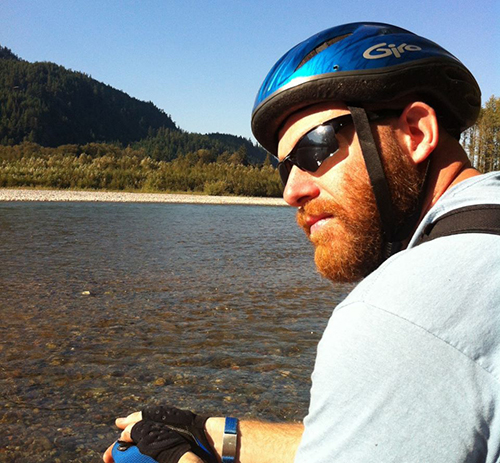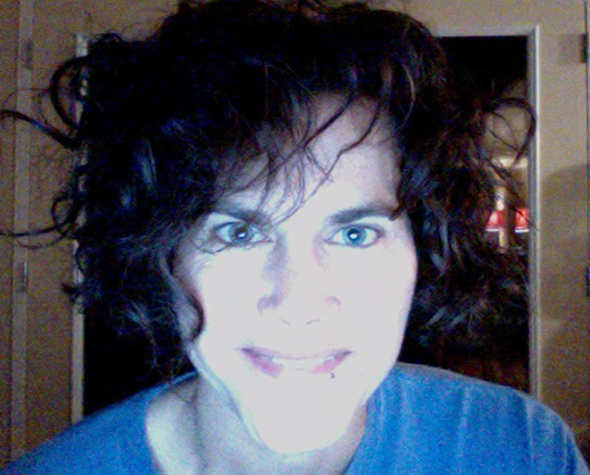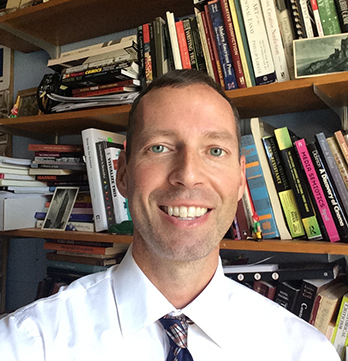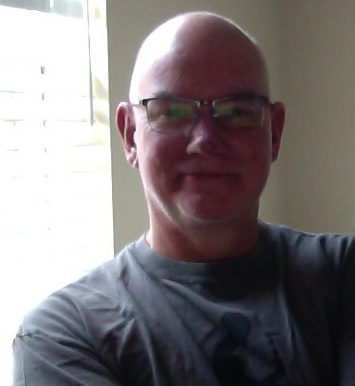Author Profiles
Rik Hunter

Attending Anne Wysocki's Writing New Media seminar at Michigan Technological University introduced me to new media theory and practice within Writing Studies and gave me the ability to teach students how to think about writing in more diverse ways, the language to act as a translator between IT and writing instructors, and a model from which to develop and support local professional development opportunities. Writing New Media is also where I first made connections with the Computers and Writing community, meeting Cheryl Ball, Kristin Arola, and Johndan Johnson-Eilola.
Rik Hunter teaches digital media and professional writing at The University of Tennessee—Chattanooga. His research interests include collaborative writing, digital media and cultures, and theories of authorship and audience. His most recent article, “Hypersocial-Interactive Writing: An Audience of Readers-as-Writers," was published in the March 2015 issue of Literacy in Composition Studies (2.1). His work has also appeared in Computers and Composition and Lore: An E-Journal for Teacher's of Writing.
Alanna Frost

I applied for and was awarded a grant to attend; I feel as though I played the “this-will-make-me-a-better administrator” angle. I offered, in my proposal, that “A Writing Center’s ability to offer a multi-media presence on campus can serve the vastly diverse needs of its learning community,” and in my “Impact” statement I pledged to use my DMAC professional development to improve the online WC with shared text and synchronous chat capabilities and to create multi-media outreach presentations.
What I learned at DMAC was most to encourage and value risk taking when students are planning any writing project—be it linear text or multimodal composition. I talked about this with my DMAC peers—one of the best things about DMAC was being a nervous student for whom the assignments seemed, at the time, impossible. I had to complete projects that I knew would be terrible, and that was a powerful experience.
Alanna Frost works at the University of Alabama Huntsville. Her work is invested in the intersections of students’ communicative realities, English-education practice, and English language policy. Alanna attended DMAC in 2009, with Cindy and Scott at the helm, Cheryl Ball as the guest speaker, Hugh Burns as the scholar in residence, and the amazing support staff of Ryan Trauman, Melanie Yergeau, and Genevieve Critel.
Moe Folk

After stretching my boundaries as a participant with CIWIC-WNM in summer 2005, I was very fortunate when Anne asked me to be her graduate assistant for the summer 2006 version. The planning went on for almost a year, and even though I knew my role during the actual event would be logistical instead of pedagogical, I was more nervous being an assistant than just being a participant because I didn’t want to let anybody down. So in two short years I went from not knowing what multimodality was to helping Anne plan and execute an intensive workshop on New Media. I often think about the sense of community Anne and the others at Michigan Tech (and CIWIC in particular) created, and I often recognize the need for me to do more work on my end to make such an environment a reality in my current context.
Moe Folk is an Associate Professor of Digital Literacies and Visual Rhetoric in the English Department at Kutztown University of Pennsylvania. His research centers on issues of ethos in digital realms, particularly concerning the relationship that multimodal style has with defining contemporary notions of ethos, and teaching writing with new composing technologies. Recent publications include a co-edited collection with Shawn Apostel, Online Credibility and Digital Ethos, and a chapter outlining a theory of multimodal style in The Centrality of Style, published by Parlor Press. Other publications include using Google Maps to teach FYC and the visual rhetoric of Carnivàle. He has also published creative works in Pank and New Letters. He is currently working on a piece about the kairotic implications of QR codes mixed with persuasive audio essays in FYC.
Les Loncharich

Marshall Kitchens at Oakland University was instrumental in enabling my participation in those workshops. A CIWIC alumnus, Marshall may have recognized something in what I was doing in writing classrooms at Oakland as connected to computers and composition. That kind of legacy sponsorship, or mentorship, is part of what makes CIWIC, and WNM, ongoing contributors to development.
At the CIWIC and WNM workshops, I learned many things: that writing can be broadly defined; that new technologies offer new affordances; and the importance of choosing the best, available means of persuasion. The CIWIC and WNM workshops continue to influence my research trajectory and my commitment to multimodal composition in writing classrooms.
Les Loncharich is an Assistant Professor, Technical and Professional Writing, in the Department of Writing and Linguistics at Georgia Southern University. Les’s research examines the useful composition of visual information in two areas: professional identity and development, and the arrangement of everyday artifacts as writing. This research touches on multimodal composing, professional and technical writing, and digital and visual rhetorics.
